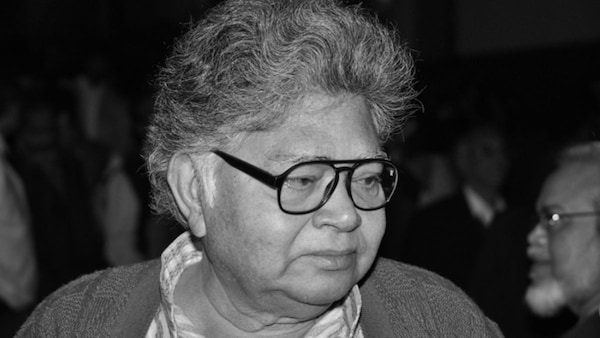On Sunil Gangopadhyay 87th birth anniversary, a look at the writer’s profound influence on Bengali cinema
From Satyajit Ray’s Aranyer Dinratri to Srijit Mukherji’s upcoming Kakababur Protyaborton, here’s charting the late writer’s profound influence on Bengal’s filmdom.

Last Updated: 05.28 PM, Sep 07, 2021
Considered Bengal’s biggest gift to literature after Nobel laureate Rabindranath Tagore, Sunil Gangopadhyay’s oeuvre successfully captured the ethos of an entire region through the second half of the 20th century. Easily one of the most prolific names in intellectual circles of his times, Gangopadhyay was known for encapsulating the “consciousness of Bengal” within his works.
Close in the heels of his sought-after literary works, came the writer’s contribution to the Bengali film industry, another faction that was succeeding in bringing about change through its boundary-defying works. Gangopadhyay’s ideologies then found a welcoming home in Satyajit Ray’s films like Pratidwandi and Aranyer Din Ratri. While Pratidwandi had its roots deeply embedded in the Naxalite movement of the 70s, Aranyer Dinratri had the breezy, fanciful world-building that the writer employed in his early works as a poet.

Gangopadhyay infused in Pratidwandi the spiritual anguish of postcolonial urban India. The death of the family patriarch thrusts the three children into an existential crisis. Siddharta, the eldest, grapples with reconciling his childhood idealism with the ubiquitous corruption that pervades society. Younger sister Sutapa dwells in a realm of materialistic happiness. Through Sutapa’s narrow-minded approach towards life, Gangopadhyay stitched a strong anti-narrative of bourgeois, capitalistic ideologies. Being a staunch communist, Gangopadhyay chose to use her as a mouthpiece against consumeristic patterns. With the youngest sibling Tunu, the writer developed yet another commentary on the ongoing furore around the Naxalite movement and how it affected young lives, drawing them in with promises of revolutionist emancipation, that ultimately crash-landed when confronted by the realities of the world at large.

Taking a completely different turn with Aranyer Din Ratri, Ray portrayed the charms of human fancy and the giddiness that accompanies such free-spirited adventures. Gangopadhyay’s motive behind the eponymous writing was precisely that. He placed his protagonists in atmospheres that screamed of entitled privilege. The characters were conceited but not in a villainous way. They were just that used to taking things for granted. Their outer sheen was measured by markers like social cred, economic standing, and their ability of ownership. But their exploration into the forest led them to discard such momentary, transactional measures for more profound principles.
Another aspect of Gangopadhyay’s mass appeal, which divorced itself from his otherwise worldly works, was his fictional series on Kakababu. Raja Roy Chowdhury, the eponymous adventurer-turned-detective was hailed for his acute sense of judgement and quick wit. A children’s favourite, the character’s travelogues have been an audience favourite across generations. Thus, the numerous film adaptations were a no-brainer. From the recent Srijit Mukherji collection including titles like Mishor Rahasya (2013), Yeti Obhijaan (2017) or the upcoming Kakababur Protyaborton (2021), to Tapan Sinha’s Sabuj Dwiper Raja (1979), Gangopadhyay’s Kakababu has enamoured fans through decades.
In 2010, director Goutam Ghose chose Moner Manush, Gangopadhyay’s incisive works of the life of Lalon Fakir, the noted Bengali Baul saint and visionary. Featuring Prosenjit as the ascetic man, Ghosh delved into the biographical feature that Gangopadhyay had breathed life into. The film received innumerable accolades across the board, with most critics hailing Prosenjit’s tempered acting and obvious command over the craft.
Gangopadhyay’s literary influence is exigent. But most importantly, the writer never limited himself to one format. His poems, (a major part of his literary expression) found centre-stage as well. Aparna Sen, who helmed Iti Mrinalini, adapted his poem ‘Smritir Shohor’ into her feature.
The widespread appeal of Sunil Gangopadhyay’s works stands testament to the kind of impact the author exercised over an entire people for almost half a century.

 Premium
Premium